This Saturday we resolved to visit Mandore Garden. Before the completion of Fort Mehrangarh and the foundation of Jodhpur making it HQ of the Rathore clan the rulers of Marwar resided there. Mandore Garden is in a distance of about 9km from Jodhpur station from where nearly in front, in a side street, our hotel was situated. Opposite the hotel was a big taxi stand, and we fast agreed upon a package price with a motor rickshaw driver. It included beside return journey the waiting time in front of Mandore Garden while we stayed inside. The general framework was cleared in mutual agreement, and we now very relaxed concentrated on the ongoing activities in the streets.

The frequented crossing Station Road - Hospital Road on Saturday mornings also is regulated by a traffic policeman operating the traffic light by hand.

High Court Road is not only named after the High Court of Rajasthan,…

…but also houses this institution.

For us these children on the back seat of their parent’s car were the face of Jodhpur of this day. Where their “normally” looking and dressed parents would bring them?
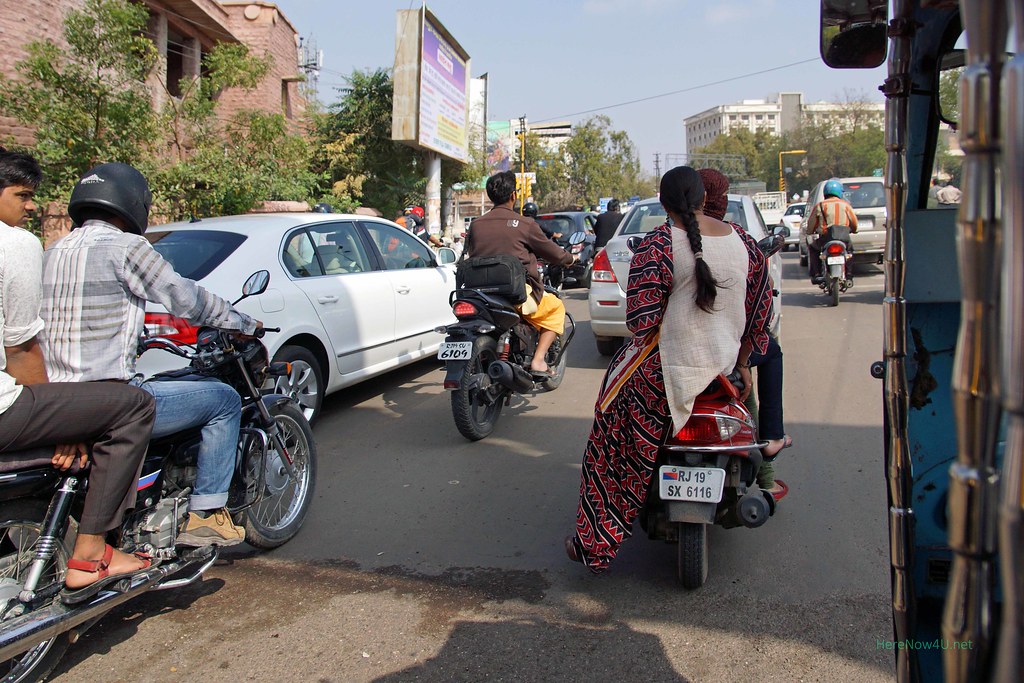
They were in the white car left and attracted our attention even in the hustle and bustle around.
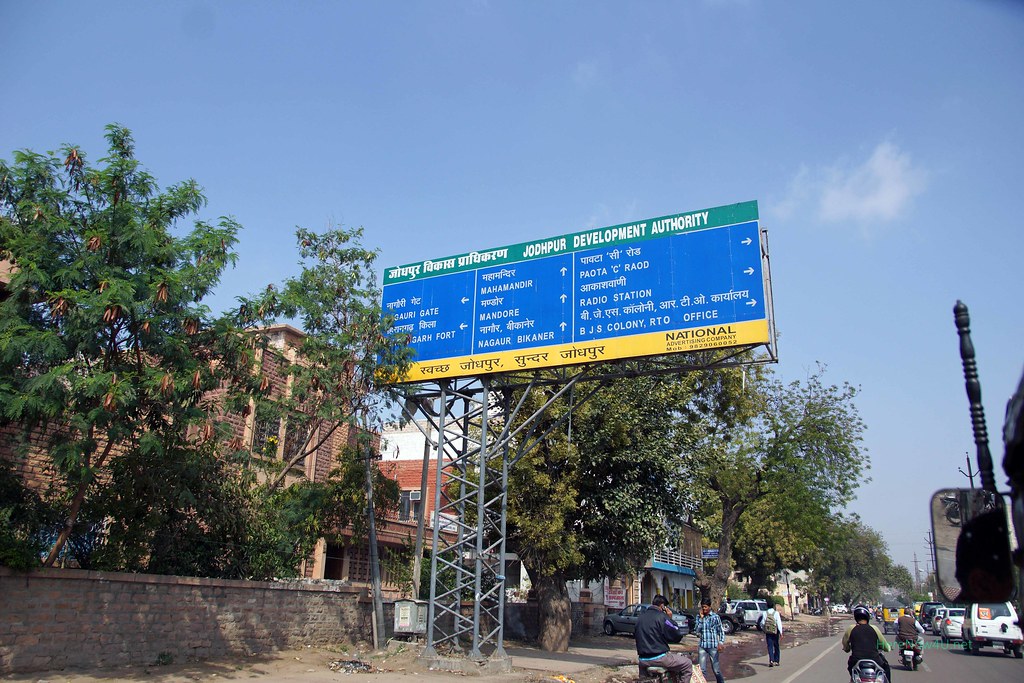
The more we left behind the railway station quarter the more houses were surrounded by trees, at the roadside this marker.

Under the old tree the young men of the quarter between stands and shops for daily needs met for a neat talk among men.
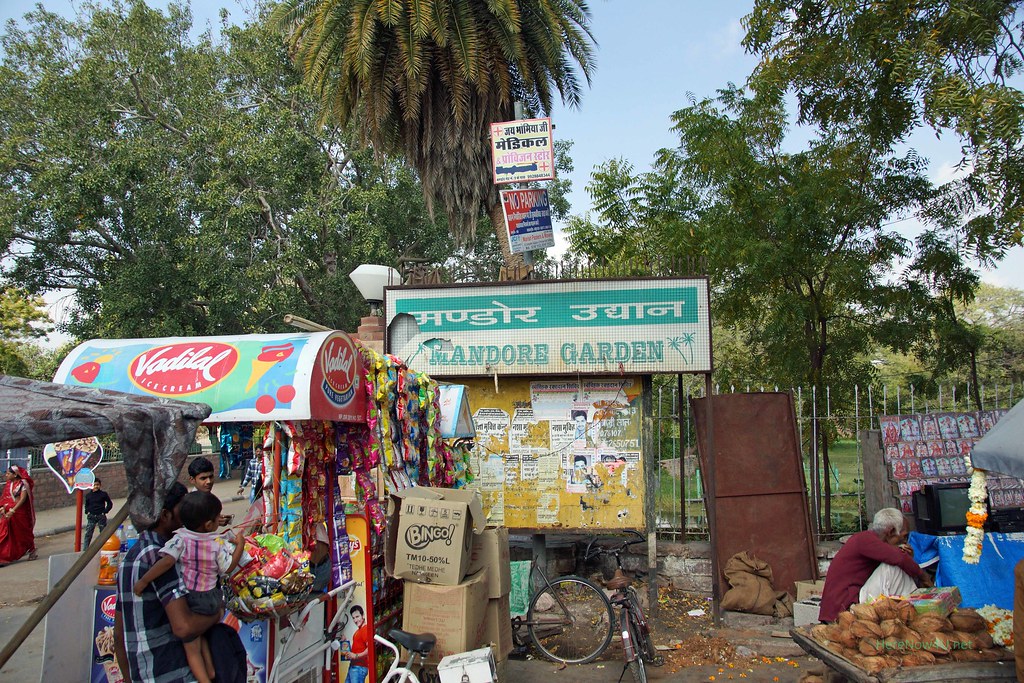
After 30 minutes we reached our destination.
From 6th to 15th century Mandore was the capital of Marwar. The Fort once described as architectural jewel of its time could not be preserved, only parts of the outer walls and ruins among them some famous Hindu Temples have lasted. The remains of the old complex are picturesquely scattered in the Park. The formerly proud temples and the rulers’ cenotaphs are utterly conserved, but can no more be visited because of deterioration. People from all walks of life as well as animals and plants are enjoying the Park now contributing so to its irresistible charisma.

Encounter between ramblers and one fearless monkey on the main path of the Park.

The other monkeys are waiting in the background near an old well.
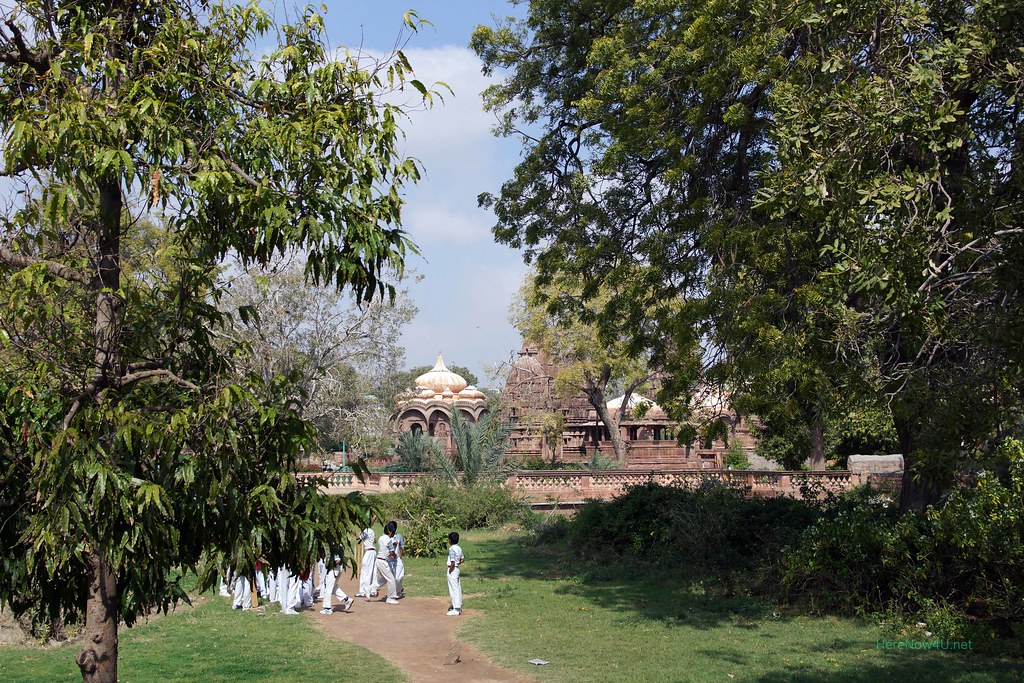
Under the shady trees now students are enjoying picnics and ball games. In the background the royal cenotaphs behind a balustrade.
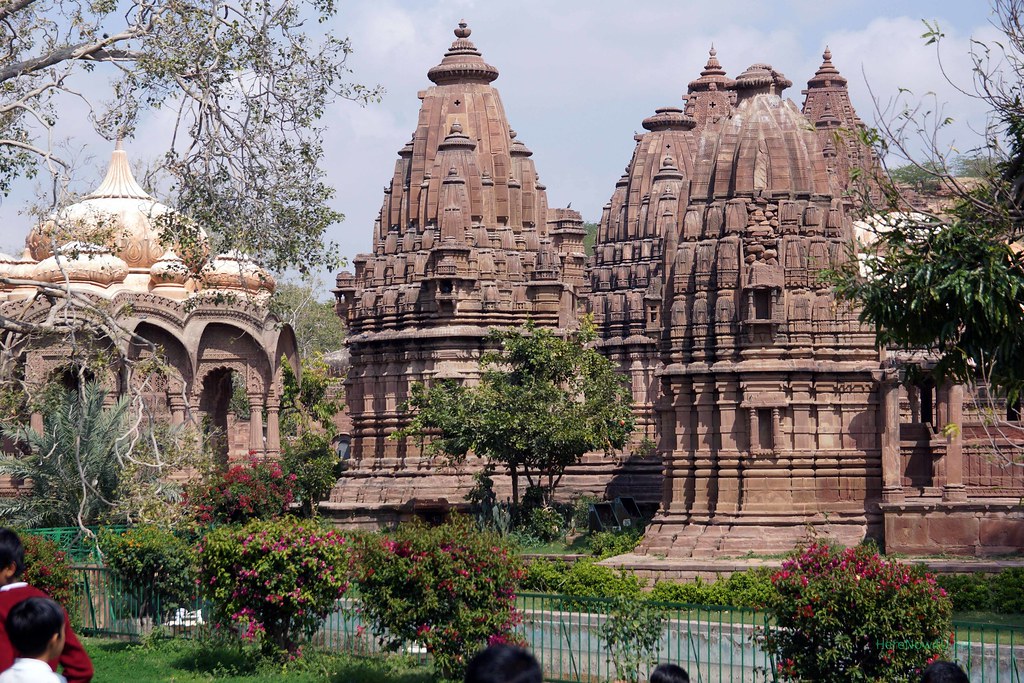
Mandore Garden nowadays: In front of the cenotaphs (l) and a Hindu Temple students are playing at the occasion of their school excursion in the midst of flowering bushes and trees on well maintained meadows.

Relicts of the moat were integrated into the Park landscape and are used to water the plants.

The cenotaphs have been constructed of close-grained red sandstone in the 18th century.
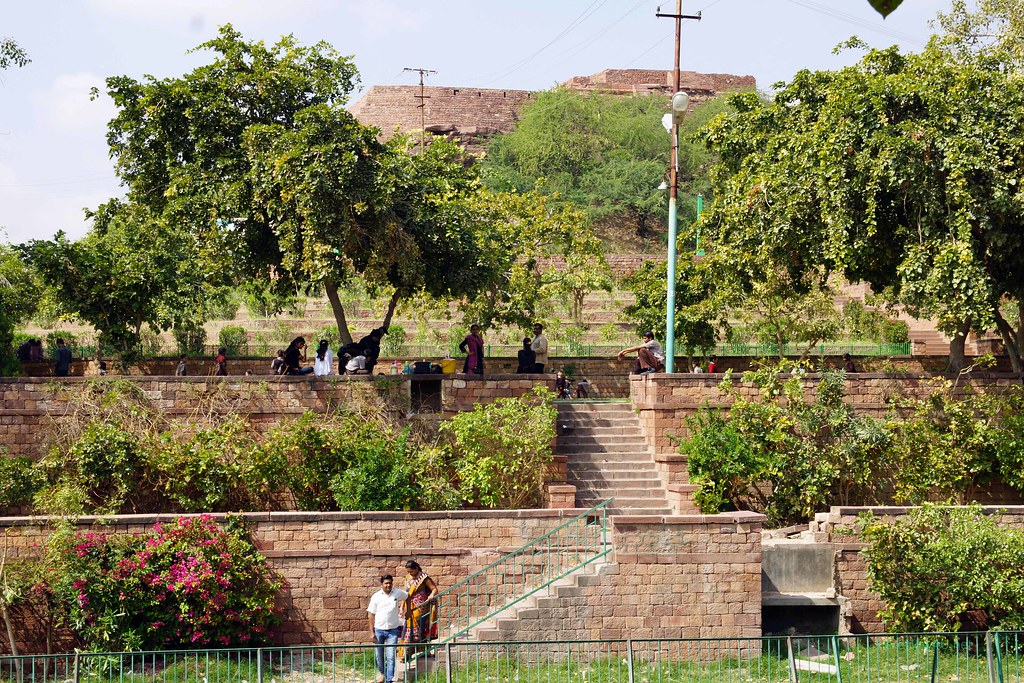
Remains of the old Fort have been transformed into sheltered and leafy terraces where those seeking rest can relax under the shady tree.

Some places in the affectionately designed Park are oases of rest,…

...others are transferred into cheerful playgrounds.

Let’s have a group photo to remember this beautiful day when all of us had so much fun together!

A family is consuming its picnic at the path side. The women are wearing bright red and orange coloured veils to be worn over the face also, as tradition still is prescribing for them.
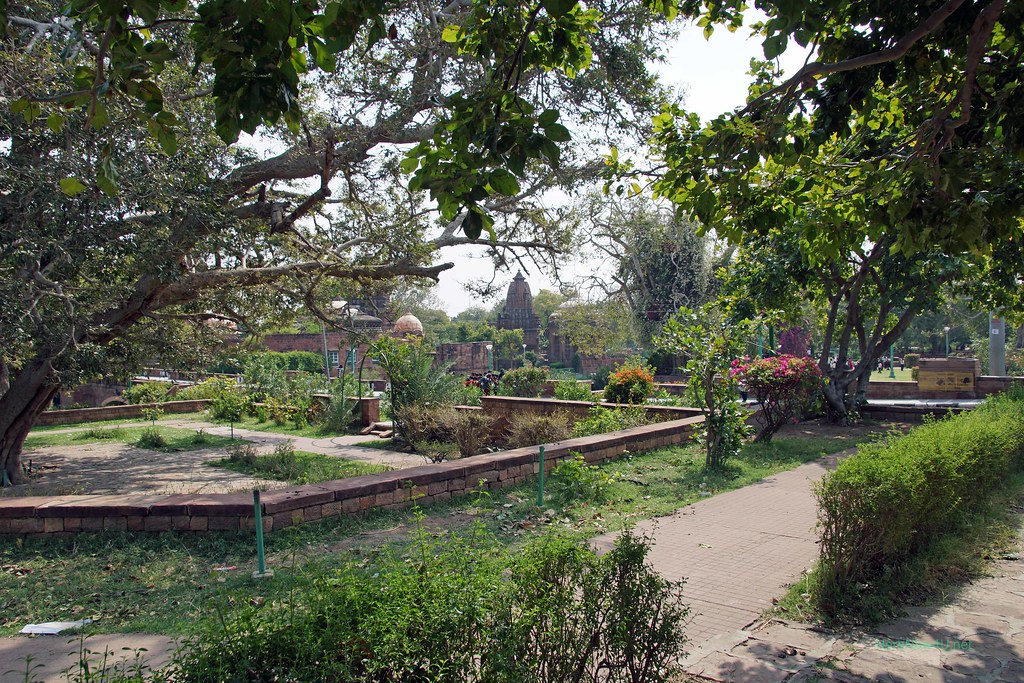
This peaceful part of the Park is nearby.
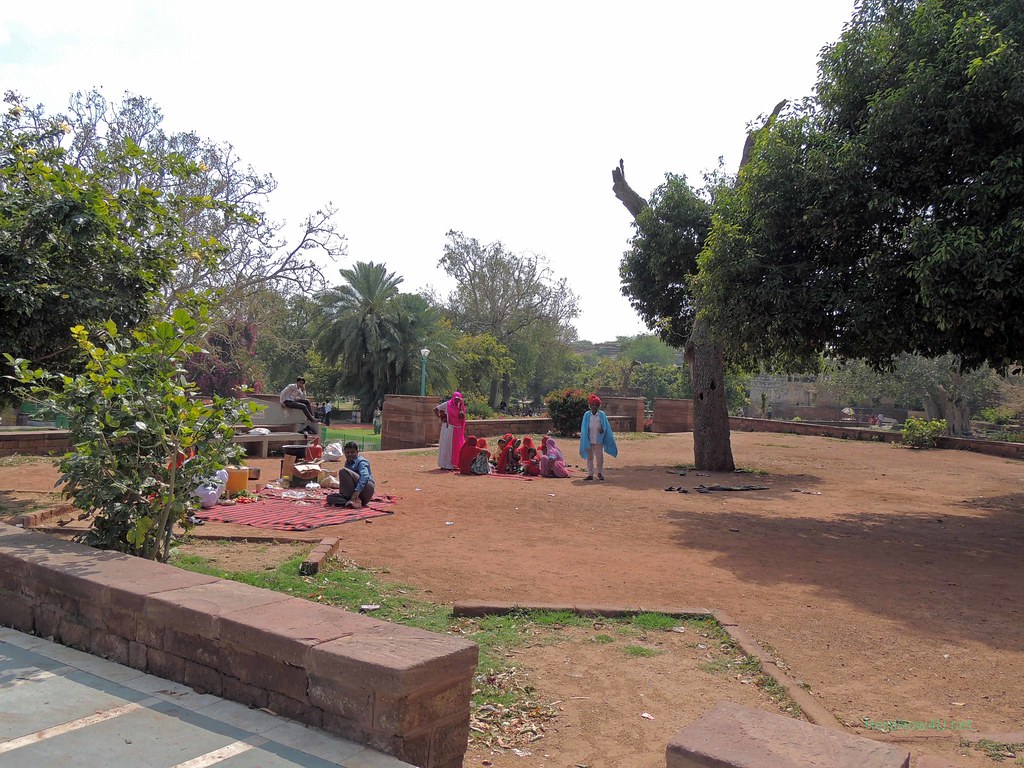
Here we were invited by gestures and amicable smiles to join their picnic.
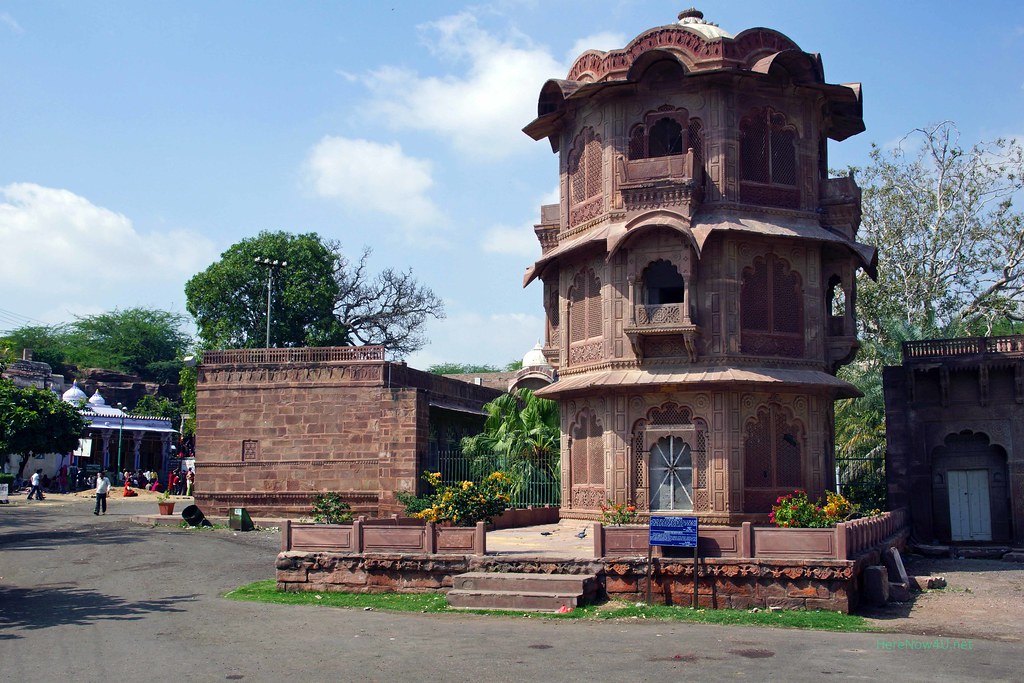
This Ek Thamba Mahal tower, built under Maharaja Ajit Singh (1707-24).

Parts of the outer wall of the ancient Fort (r), rockcut colonades (l).
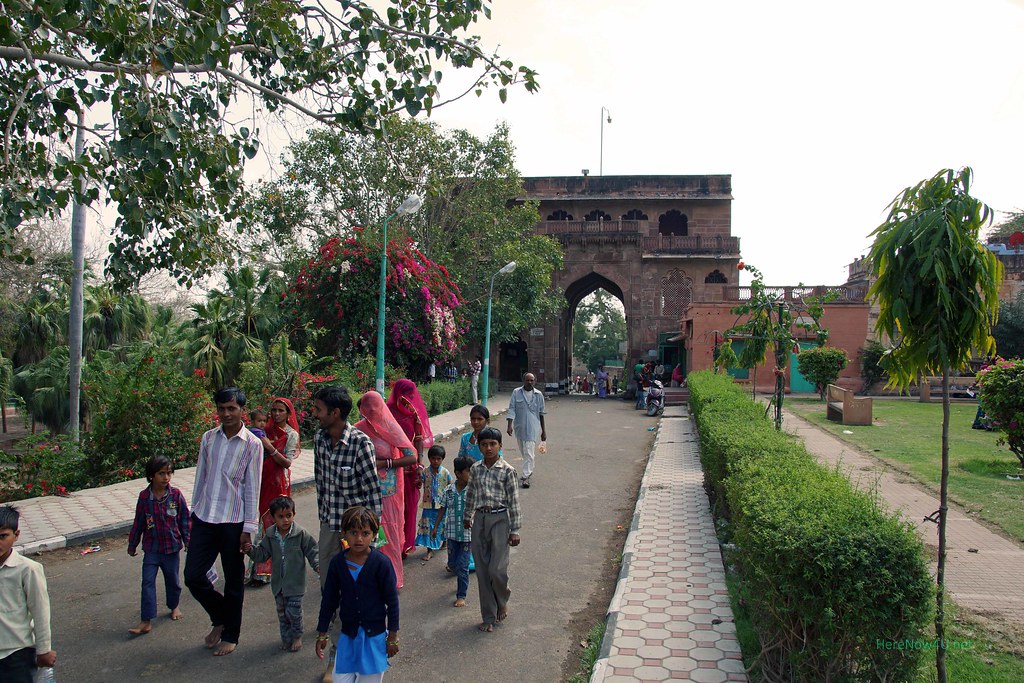
Families are showing to their children the flowering plants and enjoying the greenery of trees and bushes, in the background another preserved entry gate of the Fort.

Bheruji temple (Bheruji is revered by Hindus and Jains equally) in the background, famous for its floral and filigree decoration made of red sandstone, and the balcony-like exits with canopies.

The temple complex at Mandore Garden provides the insight why the Mandore Fort was called architectural jewel of its time.

The rock formation at the exit of the Park makes comprehensible the quantity of human efforts necessary to create an artful and functional complex of this extend, certainly a multi-generation project!

This statue of a Jodhpur Rajput ruler on his horse was donated in his honour by the people of Jodhpur to express their gratitude for his kind-hearted reign and the protection he granted to them. It is situated in the midst of the circle in front of the railway station.

We thanked the driver and remunerated him.

View to the railway station at the end of the street where our hotel was situated.

View to the left end of the street, everywhere in Jodhpur construction work is in progress, a city ready for and resolved to change.
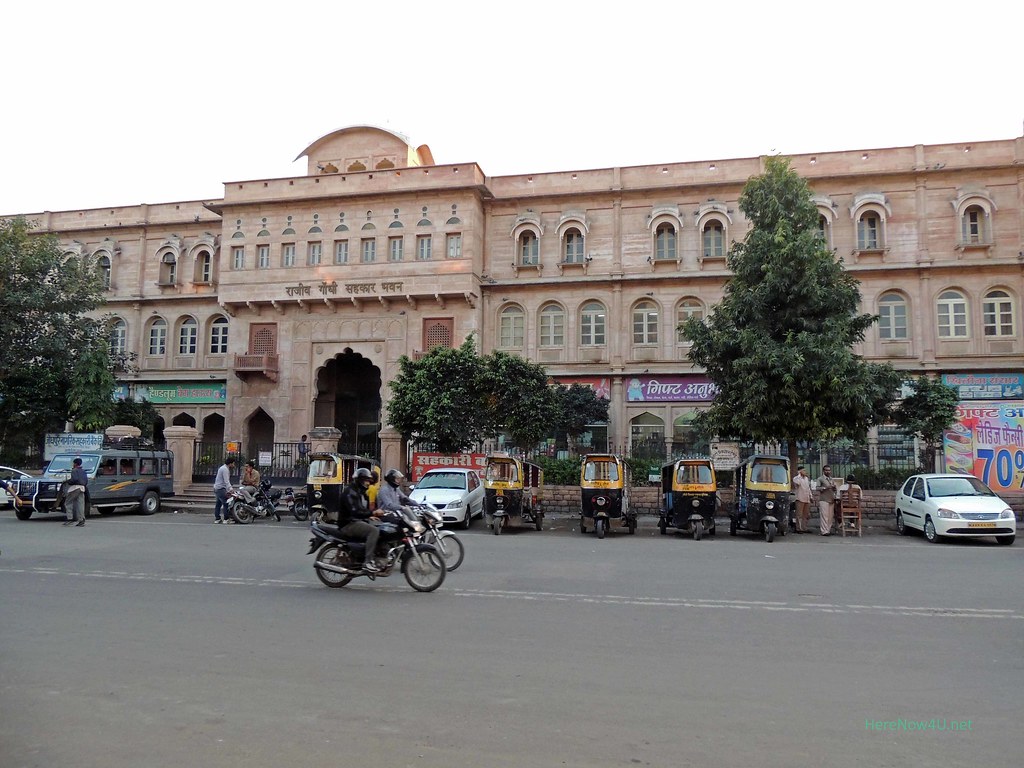
Opposite our hotel and the heap of sand is this proud building called Sahkar Bhawan, a bank. There always taxis or motor rickshaws were available.

And this was the lively road parallel to the station around the corner in late afternoon.
Jodhpur with its more than one million inhabitants is the second biggest town in Rajasthan after Jaipur. Because of its position at the eastern outskirt of Thar Desert is has become a well-frequented metropolis for desert people where many institutions can be found not available in rural areas. It is well connected by railway and road and well accessible even from distant villages. The streets of the city are like a copy of contemporary Rajasthan, tradition and smart phone coexisting peacefully, and all is about to be modified. Complete town quarters are connected to a canalization responding to contemporary needs, old houses are pulled down, new ones built instead. The force in the background holding together all that diverging still seems to be the family of the former Rajput rulers who perhaps not only for this reason is highly estimated among the people. The Rathore clan takes care for not tearing down everything, but at least to make sure that some traditional parts will be conserved because of their beauty creating identity.
 Editor Carla Geerdes
Editor Carla Geerdes